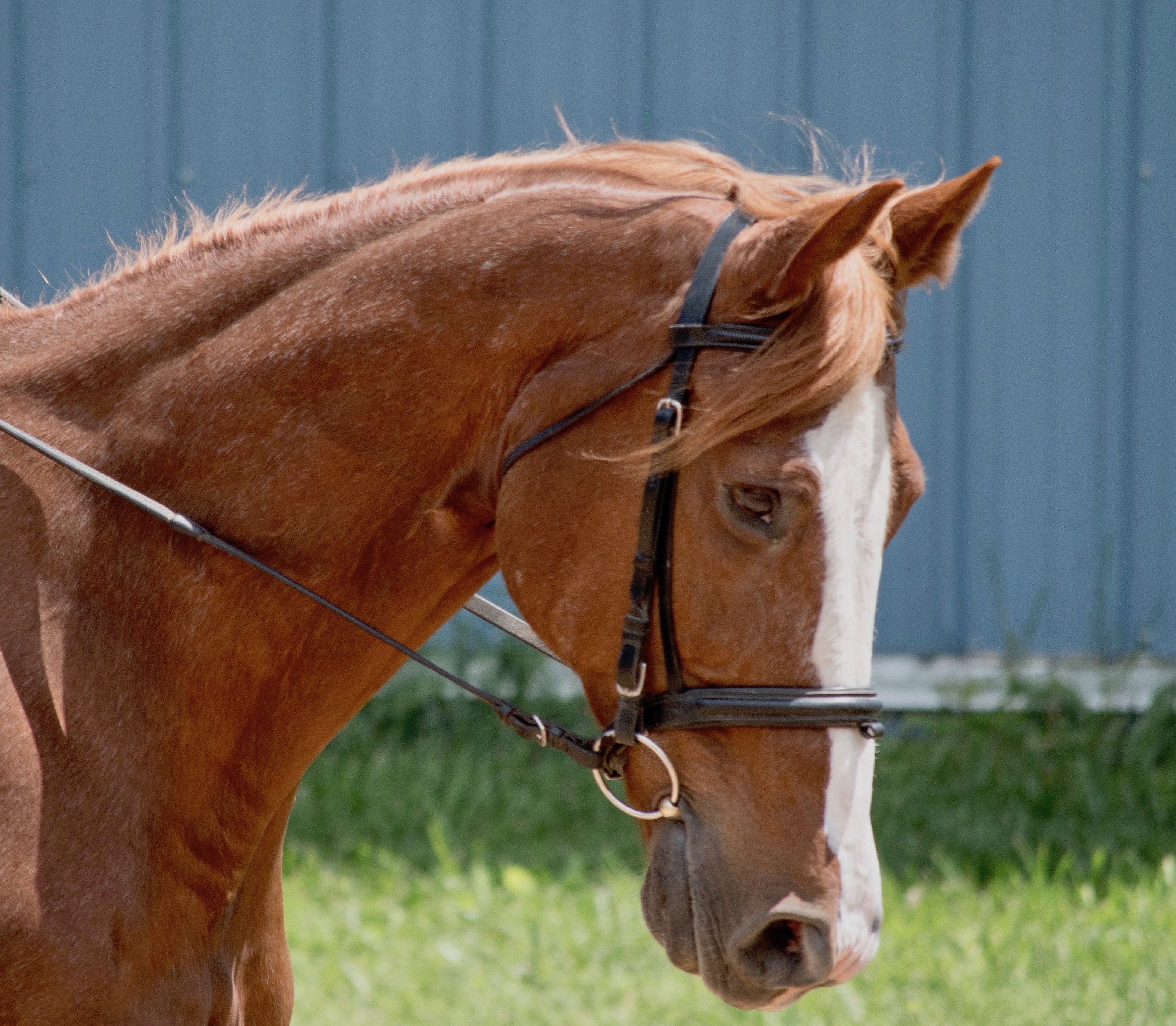Q: My 7-year-old Hanoverian gelding leans on my hands. The more contact I take, the heavier he gets, almost pulling me forward out of the saddle. How much contact should I take? —Name withheld by request
A: I am frequently confronted with this problem when I present workshops or clinics. In short, the horse has learned to avoid work. Sometimes, this is directly related to the horse’s temperament. Horses who are somewhat lazy are more prone to look for ways to avoid or escape work altogether. But more often than not, it is the result of the rider incorrectly applying driving aids in conjunction with restraining rein aids.

(Photo by Sherri Holdridge Photography)
As an Amazon Associate, Dressage Today may earn an affiliate commission when you buy through links on our site. Products links are selected by Dressage Today editors.
To fix the problem, start by tacking your horse in his usual gear, preferably with a mild bit. A loose-ring snaffle bit—single– or double-jointed—works best. Now your horse must learn to accept your driving and gentle restraining rein aids. The most natural environment for a horse is nature. So if you have the opportunity to safely go trail riding and are able to canter over a long stretch, this would be a good place to start. Use gentle half halts to bring your horse back to a quiet canter, then ride more actively forward for a short period of time. By giving half halts, the momentum of the forward movement allows your horse to activate his hind legs more, thereby stepping more under his body.

To increase your driving aids when giving a half halt:
• Engage your legs, back and weight aids (your seat).
• As your horse’s back goes up, sit in the saddle, tighten your tummy and back muscles, thereby creating driving power with your back.
• At the same moment, gently shorten your reins, momentarily applying nonyielding rein aids, then yield equally gently, like squeezing and releasing a sponge.
Throughout this process, gently continue your driving aids. They are the most important part of your half halt. Remember that all rein aids are suppressive by nature, and therefore, it is important that the intensity of your driving aids surpasses the intensity of your rein aids. If your rein aids are “louder” than your driving aids, your horse will be unwilling to use the pushing and carrying power of his hind legs.
Also, don’t allow your horse to go faster. Rather, look to get more impulsion. Continue giving half halts until you are satisfied with the response you are getting.
Repeat this exercise several times over a few days. Your horse will learn to accept your driving leg and weight aids, thus responding more readily to your half halts. You may alter the severity of your rein aids as your horse responds. When he is starting to accept the half halts, give more gentle half halts while actively driving. When you apply the half halts correctly, your horse has no option but to activate his hindquarters and regain his self-carriage. Be acutely aware that all rein aids must finish with a gentle giving (yielding) while the driving aids continue to be present. Should your horse want to lean on your hand, give a couple of short, more intense half halts, and just before giving, drive him forward more determinedly.
If you do not have the opportunity to do this on the trail, I recommend riding in a two-point position in an arena with cavalletti or small jumps set up. The basic idea is the same as on the trail—you want to introduce your horse to correctly ridden driving and suppressing rein aids by periodically riding tempo (speed) differences and jumping small jumps.
If your training must continue in the dressage ring alone, pay particular attention to correctly ridden arena figures and alternate the tempos in which you work. This involves driving aids and restraining half halts. Most effective are tempo differences in trot and canter.
In these, there are four tempo differences: working, medium, collected, extended. Include suppling exercises such as bending (e.g., riding circles, loops, serpentines and voltes), flexing (e.g., leg yielding and turns on the forehand) and stretching the horse (e.g., riding a stretchy circle). You should see positive results after a short period of time.
When your horse accepts your aids, add transition exercises such as trot–walk, walk–trot and later on trot–halt, trot on, trot–halt, reinback three strides–trot on. Keep the work phases short, approximately 10 to 15 minutes on average, because this is strenuous work for your horse. Then take five-minute walk breaks before starting up again.
I don’t recommend transitions such as canter–walk, walk–canter, canter–halt, halt–canter at this point because they are more collective. Longeing is effective in the same way as working your horse under saddle. This problem is definitely fixable and, once fixed, will greatly enhance your riding pleasure.
Alex Wortmann
holds a German Reitlehrer and Trainer A degree, and an International Equestrian Passport. He conducts the German F.N. Performance Medal and Trainer licensing courses for international English-speaking riders and trainers at the State Equestrian College of Weser-Ems in Vechta, Germany. He has given clinics in dressage and jumping throughout North America and Europe.











